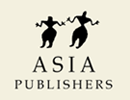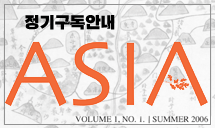|
Calling All Asia
This is a journey under the brightness of our common sun. — Harry Aveling
I wake up to a lustrous spring morning in Houston, USA. Outside, jasmine and bougainvillea are blooming and if I were in my other home, Karachi, Pakistan, I would be sipping tea instead of dark roast coffee and the same flowers would be blossoming in my parent’s garden. I stretch and slowly open out the newspaper that gets delivered to our Houston home, knowing that if I were in Karachi, we would be choosing from three papers—Dawn, The News and the Urdu Jang; however, Houston only publishes one, the large-print Houston Chronicle, and my husband and I reject it, preferring to
subscribe to the mainstream New York Times that presents a larger image of the world.
Today, three stories leap out: at the very top, details about the emotional psyche of Seung-Hui Cho, the college student who went on a shooting rampage in Blacksburg, Virginia; the second largest headline covers the US Supreme Court’s approval of more abortion restrictions; and the third headline toward the bottom of the page tells about the 190 deaths in Baghdad after bomb blasts around the city. I read through the stories fast, then surf the Internet for alternative international (Asian) news. From The News (Pakistan), I glean that former Bangladesh prime minister Sheikh Hasina plans to defy the army-backed interim government's bar on her return, and that Pakistan’s Prime Minister has met with his Chinese counterpart and 29 business pacts were signed. There is, of course, more coverage on the bombings in Baghdad.
After surfing some more, I cast aside the newspapers, both online and print, and pick up a rich collection of stories, poems and essays, the Spring 2007 issue of Asia, a publication dedicated to the celebration of language and women. In the heart of this issue are a collection of writings that delve deeply into issues of sexuality, incest, and abortion.
Korean writer Pu Hee-ryoung’s “Flowers” is an exploration of women’s bodies as the text weaves through one woman’s journey of self-discovery through masturbation and early sexual experiences. Taiwanese writer Li-ang’s gentle story “Flower Season” about a young girl skipping school is laden with sexual abuse innuendoes that never quite materialize—but the undercurrent of tension is a reminder of how often women experience such abuse (some statistics report that two in every three women are victims of sexual abuse).
In her short story “One Afternoon,” Turkish writer Sebnem Isiguzel delves even deeper into issues of abuse by exploring the difficult subject of incest. Her characters, a young woman who is having a sexual relationship with her father, is a Sebnem Isiguzel of Lolita with a disturbing edge (again, numerous statistics indicate that more women experience sexual abuse by family members rather than strangers). Mongolian writer L. Ulziitug’s startling short story “Woman,” is in the voice of a woman who waits in line to receive an abortion. Her story underscores how a mundane act such as queuing up for an emotionally charged choice, abortion, is a reality in some women’s lives—especially in nations where population control is a vital issue.
While Asia explores personal/ sexual issues that are global as well, the magazine also revisits politically charged historical events. Through her personal essay “My Life, My Literature and The World,” Palestinian writer Sahar Khalifeh shares her personal journey and her struggles as a woman and a writer in Palestine. Reading her work, I can be reminded again that Palestine exists and that women’s conflicts are universal even as we join in global struggles. Pakistani poet Kishwar Naheed visits women’s journeys
through her poems “Standing on the Shore” and “We Sinful Women.” Both poems celebrate the ordinariness in women’s lives and bodies as well as women’s inherent powers. Singaporean writer Chua Ser Koon’s “Japan’s View of the War, Fifty Years Later” is a revisitation of the Second World War and presents a different perspective on the Japanese-led massacre in Singapore—a moment in history that is denied by many Japanese.
As a woman who seeks to straddle many worlds, Asia gives me hope in my personal struggle. Regard-less of whether I’m based in Pakistan, the USA, or in another country, it would be hard to find a collection so complex, dark and yet as inspiring as Asia. In today’s global world where territorial bounries are blurred by the Internet and constant movement, we all have access to a wide array of writings and information. However, the spring 2007 Asia—dedicated to women writers—presents women’s perspectives with a richness that is rarely experienced.
By immersing myself in these honest writings I am reminded of generations of silenced histories and the urgency for our women to speak out in a world where male perspectives dominate the media and violence is viewed as an answer to socio-political problems. I read hope in Asia and I wish the editors good luck in their endeavors to move us toward seeing “ourselves through our eyes” without being “restricted by geographical boundaries.”
Sehba Sarwar’s first novel Black Wings was published in 2004 (Alhamra Publishing). Her writing largely
deals with issues of gender and displacement, and her work has been published in anthologies in Pakis-
tan, India and the United States. Currently based in Houston (USA), Sarwar serves as Founding Direc-
tor for the activist arts organization Voices Breaking Boundaries. She also co-hosts a radio show and
offers writing workshops. She regularly returns to Karachi, Pakistan for writing inspiration and is work-
ing on a new novel.
|

 03/25
03/25 

















